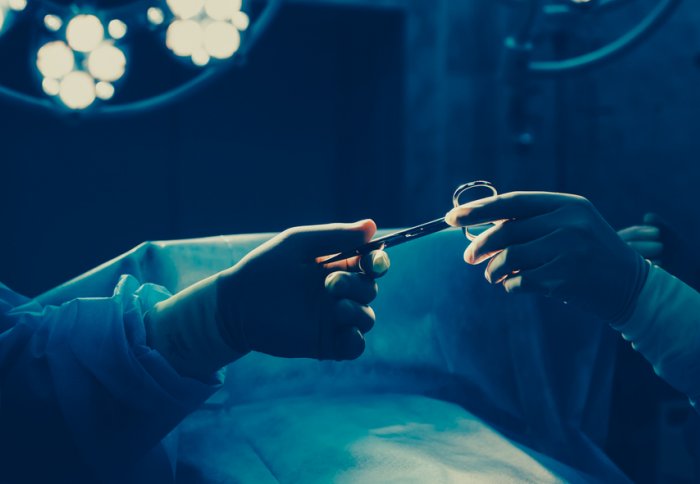Women with aortic aneurysms fare much worse than men, new study finds
by Ryan O'Hare

Mortality rates for women undergoing surgery for abdominal aortic aneurysms are nearly twice those for men, a new study has found.
The findings, published in The Lancet, show women fare worse than men at every stage of treatment, leading to the study’s authors to call for urgent improvement in how the condition is managed in women.
The researchers, from Imperial College London and the University of Cambridge, found that women are less likely than men to be deemed suitable for keyhole surgery for the condition, which is associated with better outcomes. They are also more likely to be offered no surgical treatment at all. The findings are based on a review of international research into the condition, carried out since 2000.
An abdominal aortic aneurysm is caused by a weakening in the wall of the aorta, the body’s largest blood vessel, which carries blood from the heart through the abdomen to the rest of the body. Degenerative changes in the aortic wall cause weakening and ballooning of the blood vessel, sometimes to more than three times its normal diameter, with a risk of a potentially life-threatening rupture.
Our findings show that despite overall improvement in mortality rates for this condition, there is a huge disparity between outcomes for men and women, which is not acceptable
– Professor Janet Powell
Lead author
Surgical repair for these aneurysms is offered only when the swelling is large enough to make the risk of rupture greater than the risks of the operation, with two types of surgery available.
Open surgery involves cutting into the abdomen and replacing all of the ballooning section of the aorta with a tube-like graft.
The second procedure, endovascular repair, is a minimally invasive ‘keyhole’ technique which involves inserting a tube-like graft through the leg artery into the swollen section of the aorta to reinforce the blood vessel’s weakened wall. It is associated with better early outcomes than open surgery, but can only be offered when the aneurysm meets certain criteria, due to the shape and size of the grafts.
For some patients with large aneurysms, the risk of both of these options are deemed to outweigh the risk of rupture and no treatment is offered unless patient fitness can be improved.
The study, funded by the National Institute for Health Research, found that only a third of women were deemed suitable for keyhole surgery, compared with just over half of men. Less than a fifth of men were not offered surgery, compared with a third of women.
Women faring worse
Mortality rates for women for the 30 days after keyhole surgery were 2.3 per cent compared with 1.4 per cent for men. For open surgery, this rose to 5.4 per cent for women and 2.8 per cent for men.
Women tend to develop aneurysms at an older age than men, and their aortas are smaller. Given the current technologies available, both of these factors can affect which type of surgery is deemed suitable, or whether surgery is an option at all.
The researchers say that while these factors will form the basis of future research, age and physical fitness are not enough to account for the differences seen in mortality between men and women.
Professor Janet Powell, from Imperial’s Department of Surgery & Cancer and who led the research, said: “Our findings show that despite overall improvement in mortality rates for this condition, there is a huge disparity between outcomes for men and women, which is not acceptable.
“The way abdominal aortic aneurysm is managed in women needs urgent improvement. We need to see if the devices used for keyhole surgery can be made more flexible to enable more women to be offered this option. We also need more grafts designed to fit women, who have smaller aortas, as all the grafts currently available have been designed for men.”
In the UK, abdominal aortic aneurysm is more prevalent in men, with men over 65 regularly screened for the condition. The condition often has no symptoms and many women are only diagnosed when the aneurysm ruptures, at which point the likelihood of survival can be less than 20 per cent.
Professor Powell added: “Abdominal aortic aneurysm is still seen as mainly a male condition, and as a result, the way we manage the condition – from screening to diagnosis and treatment – has been developed with men in mind. Our study shows that this needs to change.”
-
‘Morphological suitability for endovascular repair, non-intervention rates, and operative mortality in women and men assessed for intact abdominal aortic aneurysm repair: systematic reviews with meta-analysis’ by Ulug, P et al, is published in The Lancet.
The research was funded by the National Institute for Health Research and supported by the British Heart Foundation.
Article supporters
Article text (excluding photos or graphics) © Imperial College London.
Photos and graphics subject to third party copyright used with permission or © Imperial College London.
Reporter
Ryan O'Hare
Communications Division